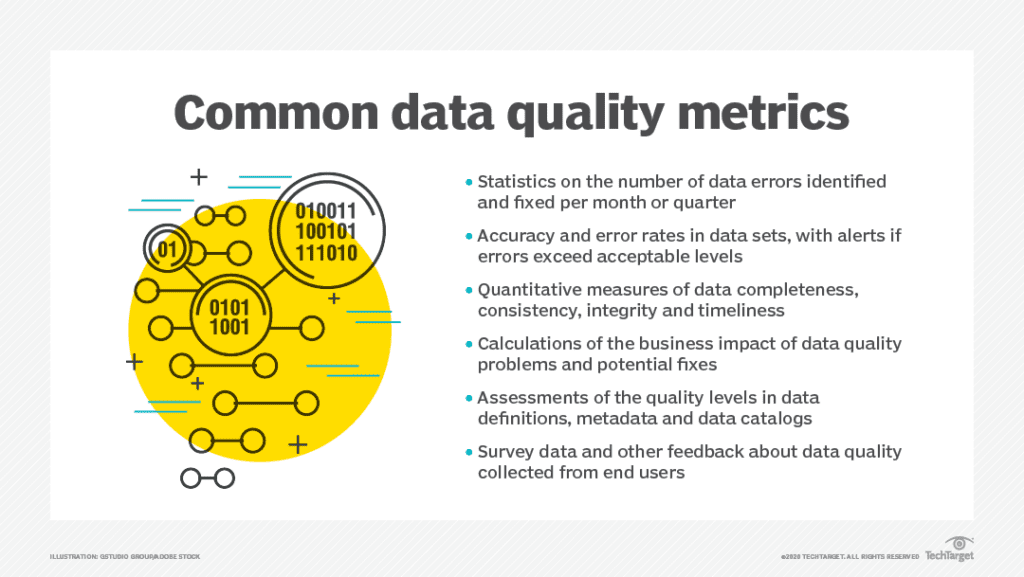
Angsuman Dutta
CTO, FirstEigen
How to Build a Framework for Data Governance?
Good data is the lifeblood of your organization.
As data volume continues to rise, your ability to manage it could increasingly spell the difference between success and failure. Data governance is a framework that helps businesses ensure that they’re managing their data efficiently and effectively.
Data governance encompasses all the people, processes, and technology that an organization uses to manage and protect its data. In this article, we’ll explore the concept of data governance and establish some steps you can follow to implement a strong data governance framework in your own organization.
Key Takeaways
- Data governance is a framework for how your organization manages data.
- A data governance framework has to consider everything from data quality to company priorities to regulatory compliance and combine those factors into a single framework.
- First Eigen can help you take the next step toward making the most of your data.
Introduction to Data Governance
In today’s data-driven world, managing data effectively is essential for business success, but it can be a daunting task without the right framework. Data governance is the process that helps organizations manage their data assets to achieve their strategic objectives. By implementing a robust data governance framework, businesses can ensure that their data is reliable, secure, and compliant with regulatory standards.
What is Data Governance Framework?
A data governance framework is a set of policies, procedures, and roles that guide how an organization manages, protects, and utilizes its data. This framework ensures that data is accurate, complete, secure, and accessible, while also helping organizations comply with regulatory requirements.
But what exactly does it mean to “manage data” through data governance?
Key Elements of a Data Governance Framework
Data governance focuses on four critical pillars:
- Accuracy: Ensuring data is as precise and error-free as possible.
- Completeness: Maintaining full data records, which may involve sourcing additional data.
- Timeliness: Providing up-to-date data when needed, as outdated data is no better than inaccurate data.
- Compliance: Ensuring data handling aligns with industry regulations and legal requirements.
By addressing these four core components, organizations can develop a data governance strategy that improves data quality, mitigates risks, and enhances regulatory compliance. In this guide, we’ll explore how to build an effective data governance framework that not only safeguards your data but also unlocks its full potential for business growth.
7 Steps to Build a Data Governance Framework
Data governance encompasses various disciplines across different areas of an organization. Follow these steps to build your data governance framework.
By following these 7 key steps, you can build an effective data management governance framework that ensures data accuracy, security, and compliance.
1. Define Your Objectives
Begin by outlining your specific objectives for implementing a data governance framework. What are your goals? What is the desired outcome of your data governance? Is your goal to improve data accuracy, minimize data risks, or ensure regulatory compliance? Your approach should align with your organization’s unique data needs.
Before diving into action, craft a comprehensive data governance roadmap that integrates your business goals and priorities into the larger data governance structure.
2. Identify Key Stakeholders
A successful data governance methodology relies on collaboration between key stakeholders. Identify critical team members, including business leaders, IT experts, data stewards, and compliance officers who will be responsible for the success of the framework.
Engaging the right stakeholders ensures your data governance structure addresses the diverse aspects of data management. Each stakeholder has a unique part to play – data governance is an ensemble production, so a successful outcome requires participation from all your key stakeholders.
3. Implement the Data Governance Framework

Once objectives and stakeholders are clear, it’s time to focus on implementing the data governance framework. This is the set of all policies, procedures, and guidelines that govern the management of data within your organization.
Implementing this framework includes establishing roles and responsibilities for key stakeholders, creating processes for data management (expanded in step 4), and defining the technology to support this governance (expanded in step 5). The successful implementation of a data management governance framework hinges on these well-established policies and processes.
4. Develop a Data Management Process
A well-designed data management governance framework requires an efficient and scalable process. Data management spans the gamut of data acquisition, data quality, data integration, data transformation, and data storage ensuring that data remains accurate, complete, timely, and compliant.
As part of your overall data governance methodology, design a flexible, scalable, and user-friendly system. Document the process and communicate it to all stakeholders to align efforts and ensure proper execution.
5. Implement Technology Solutions
The meteoric rise in data volume is mostly due to new technological advancements. These technologies include everything from data governance tools to data quality tools, data integration tools, and data storage solutions.
To keep up with ever-changing technologies, select and implement a data stack that’s compatible with your existing IT systems. These technology tools can help automate as much of your data governance framework as possible, which should improve your data quality, provide novel data-driven insights, and minimize tedious human labor for tasks that software can accomplish faster, cheaper, or better.
6. Measure and Monitor Progress
To measure the success of your data management governance framework, establish metrics to monitor progress. Use metrics such as data accuracy, completeness, timeliness, and compliance to evaluate how well the framework meets your goals.
Regularly review these metrics to identify trends and adjust your approach to data governance as needed.
7. Establish a Continuous Improvement Process

Implementing a data governance framework is not a one-time task—it’s an ongoing process. Create a continuous improvement plan that includes regular audits, stakeholder feedback, and industry benchmarking to ensure your framework evolves alongside your organization’s needs.
The Future of Data Governance: FirstEigen’s AI-Powered Solutions
In the digital age, data drives success – companies that are good at using their data tend to outperform those that are not. In the race to make the most of your data, one of the most important steps is to build a framework for data governance.
That is why data governance is such an important topic for decision-makers, and why First Eigen can help make all the difference.
First Eigen uses AI and machine learning to monitor data quality from the source all the way to the end of your data’s lifecycle. As data continues to play a central role in your company’s success, you need to prioritize data governance. By investing in your data, you can maximize your efficiency and effectiveness while minimizing your risk and budget.
To see how First Eigen can help you make the most of your data, schedule a demo today.
FAQs
Data governance is essential for businesses because it ensures the accuracy, security, and availability of data. With a robust data governance framework, organizations can minimize data-related risks, comply with regulatory standards, and maximize the value of their data. Effective governance leads to better decision-making, enhanced operational efficiency, and improved customer trust.
Some common challenges in implementing a data governance framework include:
- Lack of stakeholder alignment, where business and IT teams may have different goals
- Complex data environments, with multiple systems and inconsistent data sources
- Data quality issues that hinder decision-making
- Resistance to change, as employees may not fully understand the value of governance
- Regulatory requirements that are difficult to meet without proper tools
A continuous improvement process ensures that your data governance framework remains effective and up-to-date as your organization evolves. By regularly auditing data governance processes, gathering stakeholder feedback, and benchmarking against industry best practices, you can identify areas for improvement and make necessary adjustments. This ensures ongoing data quality and compliance, and helps your organization stay competitive in the digital age.
While closely related, data governance focuses on the overarching policies, standards, and roles that define how data should be managed. It sets the rules and framework for data management, which involves the practical application of those rules to collect, store, and process data. Essentially, data governance is the strategy, while data management is the execution.
A data governance methodology is a systematic approach to designing, implementing, and managing a data governance framework. It defines the processes, tools, and best practices used to govern data and ensure consistency. This methodology helps businesses establish clear guidelines for managing data, improving data quality, and achieving regulatory compliance.
Any industry that deals with large volumes of data can benefit from a data governance framework. This includes:
- Finance and banking (to ensure regulatory compliance and data security)
- Healthcare (to manage sensitive patient information securely)
- Retail (to optimize data for customer insights and personalization)
- Manufacturing (to improve operational efficiency through accurate data)
- Tech and software (to manage product and customer data)
FirstEigen leverages AI and machine learning to monitor data quality across its entire lifecycle. By automating data governance processes, FirstEigen’s DataBuck helps ensure data accuracy, completeness, timeliness, and compliance. It provides real-time insights, detects anomalies, and mitigates data risks, making it easier for companies to implement and maintain an effective data governance framework.
Discover How Fortune 500 Companies Use DataBuck to Cut Data Validation Costs by 50%
Recent Posts
Get Started!



